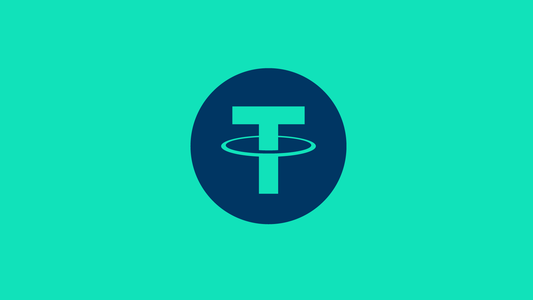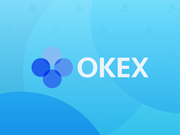Tether (USDT)
8 minutes
Beginner
"We are not an altcoin, we do not represent a separate blockchain. We are a service, a token representing dollars. We specialize in issuing currencies on the blockchain. Tether is a digital bridge with a real-world asset."
Tether (USDT) is the world's first stablecoin (a cryptocurrency whose value is pegged to the value of fiat currency). Originally named Realcoin, Tether was launched in 2014 by Bitcoin investor Brock Pierce, entrepreneur Reeve Collins, and programmer Craig Sellars.
Initially, USDT was issued on the Bitcoin protocol using the Omni Layer, but later gained implementation on other blockchains. Now, as you can see in the chart below, the majority of its supply exists on Ethereum in the form of ERC-20 tokens. Tether has also been issued on blockchains such as TRON, EOS, Algorand, Solana, and OMG Network.
Tether is a key element of the cryptocurrency ecosystem. As of December 2020, Tether was the fourth largest cryptocurrency in the world with a market capitalization of nearly $20 billion, trailing only Bitcoin, Ethereum, and XRP. Additionally, it is considered the coin with the highest daily trading volume - even higher than Bitcoin.
Creating Tether (USDT)
The history of Tether began in 2012 when programmer J.R. Willett proposed a solution for creating new cryptocurrencies based on Bitcoin. Based on this solution, the Mastercoin token was released on July 31, 2013. To promote the Mastercoin protocol (later renamed the Omni Layer Protocol), the Mastercoin Foundation was created, later renamed the Omni Foundation. One of the founders of the Mastercoin Foundation was the chairman of the Bitcoin Foundation, Brock Pierce, and the position of CTO was taken by programmer Craig Sellars.
In July 2014, Pierce, Sellers, and advertising industry entrepreneur Reeve Collins launched the Realcoin startup with headquarters in Santa Monica, USA. On October 6, 2014, using the Bitcoin blockchain and the Omni Layer protocol, the company issued Realcoin tokens.
On November 20, 2014, Realcoin CEO Riv Collins announced the rebranding of the project to Tether. The creators of the project wanted to avoid association with altcoins.
Shortly thereafter, Tether Limited, a company registered in Hong Kong and on the Isle of Man, announced the launch of closed beta testing for three tokens: USTether (US+) for the US dollar, EuroTether (EU+) for the euro, and YenTether (JP+) for the Japanese yen.
Tether also announced partnership agreements with the Hong Kong-based cryptocurrency exchange Bitfinex and three startups, in which Brock Pierce was involved: Expresscoin, GoCoin, and ZenBox.
In January 2015, Bitfinex added Tether to its exchange listings. Although representatives from Bitfinex and Tether claimed to be unaffiliated, in November 2017, leaks from documents known as the Paradise Papers revealed that Bitfinex employees Philip Potter and Giancarlo Devasini had founded Tether Holdings Limited on the British Virgin Islands.
According to the official website of Tether, the Hong Kong-based company Tether Limited is a subsidiary of Tether Holdings Limited.
How does Tether (USDT) work?

The issuer of Tether tokens is Tether Limited. You can follow the issuance process in Omni Explorer.
The cycle of Tether tokens includes the following stages:
- The user deposits fiat funds into Tether Limited's bank account.
- Tether Limited creates Tether tokens in the equivalent of 1 USD = 1 USDT or 1 EUR = 1 EURT and loans them to the user. The tokens enter circulation.
- The user conducts operations with Tether: transfers, exchanges, etc.
- The user makes a deposit with Tether to redeem for fiat.
- Tether Limited destroys the deposited tokens and sends fiat to the user.
Initially, USDT tokens were only issued on the Bitcoin blockchain using the Omni Layer protocol.
Omni Layer is a platform implemented as a software layer on top of the Bitcoin blockchain. It allows for the creation, transfer, tracking, exchange, and destruction of Tether tokens. Each Omni transaction and, consequently, Tether transaction is recorded in the Bitcoin blockchain with the same hash.
Currently, Tether tokens are issued on the Ethereum blockchain using the ERC-20 protocol, on the Tron blockchain using the TRC-20 protocol, on the EOS blockchain, on the Algorand blockchain, and also on the Liquid Network.
User's basic software
As part of Tether tokens being issued through the Omni Layer protocol on the Bitcoin blockchain, a user can use a wallet that supports the Omni protocol, such as the official desktop wallet Omni Core and the web wallet OmniWallet. There are also third-party wallets with Omni Layer support available, such as Holy Transaction, Ambisafe, and Coinomi.
For operations with Tether tokens issued on Ethereum, wallets supporting the ERC-20 format can be used, such as MyEtherWallet, Ledger Nano S, Metamask, Atomic, Edge, Exodus, and others.
Development of Tether (USDT)
Since 2014, the company's management has claimed that all USDT tokens are fully backed by US dollars.
On February 27, 2019, Tether changed its USDT backing policy. Since then, each coin has been backed by "reserves that include cash and cash equivalents, as well as, from time to time... other assets and receivables from loans made by Tether to third parties."
In May 2019, Tether Limited's Chief Legal Officer, Stuart Hoegner, confirmed that USDT was only backed by fiat reserves up to 74%.
In April 2019, the New York State Attorney General's Office charged the Bitfinex exchange with withholding the loss of $880 million from users and using Tether reserves to cover the resulting hole. Bitfinex funds were frozen in Crypto Capital processing accounts in several countries.
In October 2019, investors filed a class action lawsuit against iFinex Inc. the parent company of Bitfinex, accusing it of creating billions of dollars worth of USDT tokens without real collateral. According to the plaintiffs, this contributed to the rise in bitcoin's price to an all-time high in 2017.
The overall list of charges includes violations of the U.S. Commodity Exchange Act, the RICO (Racketeer Influenced Capital Investment) Act, money laundering, Pump & Dump schemes, market manipulation by issuing USDT and deliberately defrauding investors.
On June 3, 2020, the plaintiffs filed a new version of the lawsuit, which also contains allegations against Bittrex and Poloniex. It is alleged that both of these exchanges were directly involved in the scheme, creating the illusion of bringing fresh liquidity to the market through multiple BTC purchase orders. Bitfinex and Tether said the lawsuit is baseless and intends to continue to defend its reputation in court, while Bittrex and Poloniex called the allegations against them "unconvincing".
Token issuance
In September 2016, Tether announced the launch of the EURT (Eurocoin) token, pegged to the euro.
In April 2019, Tether issued its first USDT tokens on the Tron blockchain, and in June of that year on the EOS blockchain.
In July 2019, Blockstream and Tether launched USDT Stablecoin on the Liquid Network. In the future, Blockstream and Tether plan to launch USDT tokens on the Level 2 Lightning Network.
In September 2019, Tether released a stabelcoin tied to the offshore Chinese yuan (CNH).
In January 2020, the company announced the launch of a new token backed by gold. Tether Gold (XAUT) "represents the ownership of one troy ounce of physical gold in a particular bullion block. Stablecoin will be available on the Ethereum (ERC-20 protocol) and Tron (TRC-20) blockchains. The token's gold collateral will be held in a Swiss vault.
In February 2020, Tether launched a U.S. dollar-linked steblecoin on the Algorand 2.0 blockchain. Through the partnership, Tether will take advantage of standardized asset technology (ASA). The latter opens up a wide range of possibilities for tokenization and issuing "assets of any type" on the Algorand blockchain. Algorand developers are working on a blockchain based on the Proof-of-Stake consensus algorithm.
On March 20, 2020, Tether (USDT) was launched based on the Bitcoin Cash blockchain. For this purpose, the developers used the Simple Ledger Protocol, which allows to issue tokens on top of the BCH network.
Conclusion
Stablecoins make crypto-trading more convenient because they eliminate the need for multiple conversions between cryptocurrency and fiat. This makes USDT an attractive asset for cryptocurrency trading.



